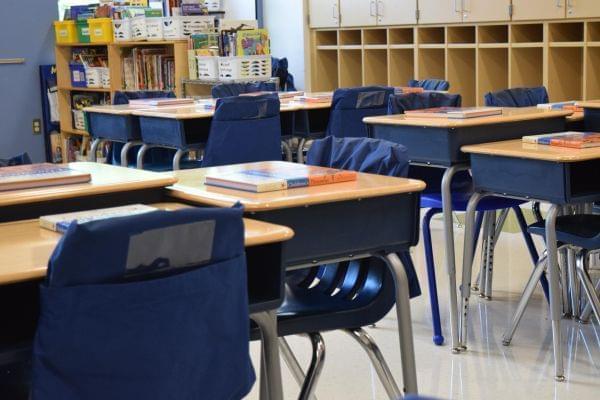How Many Hours A Day Should Kids Be In School? How About Zero?

Carter Staley/NPR Illinois
When the Illinois state legislature passed its new school funding law, it changed more than just the dollar amount each school district receives. It also changed the number of hours of instruction schools have to provide.
Under the old law, schools had to provide at least five “clock hours” of instruction per school day. Now, there’s no minimum number of hours — or minutes — because that provision of the school code got wiped out by the legislature.
But don’t let your kids get too excited yet. All this means is that each school district is now free to set their own rules.
Ralph Grimm, the acting chief education officer for the Illinois State Board of Education, says this thing that sounds like a big change may, in many places, be no change at all.
“If a school district is happy with the way things are going in their buildings, there are absolutely no changes as a result of this that they have to make. Absolutely none,” he says.
Grimm retired as superintendent of Galesburg schools in June 2017. During that time, he was actively involved in pushing for school funding reform, and attended countless committee hearings and task force meetings focused on funding. He agreed that the topic of repealing Section 18-8.05 — the portion of state school code pertaining to minimum clock hours — was never publicly discussed at those meetings. Asked whether the repeal was inadvertent or intentional, he said he didn’t know. “I don’t have any information relative to that,” he said.
In a memo to district and regional superintendents, Grimm wrote that districts “should work with their school boards and collective bargaining units to define an instructional day.” The instructional day “need not be confined to classroom-based instruction,” he wrote, but could instead include “classroom instruction, online instruction, independent research projects, work-based learning and internships, to name a few.”
Such flexibility has implications for measuring student attendance. In his memo, Grimm wrote that attendance can be counted “when the student is participating in learning anywhere and anytime.” Furthermore, student schedules can be shaped by their needs. “Students learn in a variety of ways and environments,” Grimm wrote. “They may have different schedules and modes of instruction, depending upon individual student needs.”
He says the new scenario gives high schools the flexibility to offer internships, dual credit courses, credit for work programs, and other creative opportunities that could help build Illinois’ workforce.
His memo came “really as a surprise” to State Sen. Jennifer Bertino-Tarrant (D-Shorewood), who chairs the Senate education committee. She says the repeal must’ve been inadvertent. “It was not part of evidence-based funding; it was never the plan to reduce any of the hours,” she says.
She first heard about it — and Grimm’s memo — this past weekend when she attended the annual conference of Illinois school boards, where she was asked how she felt about requiring a minimum number of clock hours of instruction.
“I told them I do support a minimum,” Bertino-Tarrant says, “however, I would be willing to listen to their ideas about flexibility.”
She’s concerned that without a minimum, the state may see a disparity in instruction among school districts.
“I think we would see some of our school districts that are very high tech possibly going to more online or virtual classrooms,” she says, “as opposed to some of our school districts that are still fighting for broadband having to have a more traditional route.”
But Bertino-Tarrant — a former high school teacher and principal — also sees other benefits to traditional classroom instruction.
“I am a firm believer that part of the education experience is the school environment, the school culture, interacting with instructors, interacting with other students, learning from other students,” she says. “So whereas I appreciate and I am open to some flexibility, and I’m not saying five hours has to be the minimum... I am open to some flexibility, but I do think we need some minimum seat time in school.”
She also predicts a spiral of unintended consequences that could result from disrupting traditional patterns of school attendance.
“I am not opposed to change. I’m someone who appreciates change. But I think it has to be done cautiously and not at the expense of the students,” she says.
The lack of firm requirements could also provide opportunities for venture philanthropists to launch virtual charter schools, promising to educate elementary students purely online. Grimm says that’s unlikely to happen.
“I believe that this flexibility will become self-regulating,” he says. “And I think that communities will raise their voice if things get too crazy.”

